
Accessible PDF documents within the Sixth Unit: Accessible Digital Content
- Subject:
- Applied Science
- Career and Technical Education
- Computer Science
- Education
- Information Science
- Material Type:
- Module
- Author:
- Mada Center
- Date Added:
- 08/12/2024

Accessible PDF documents within the Sixth Unit: Accessible Digital Content

Accessible Digital Presentations within Unit Six: Accessible Digital Content

This unit "Accessible Word-Processing Documents" is designed to enhance learners' understanding of accessibility in digital content creation. Learners will explore the essential principles and techniques required to make word processing documents accessible, including testing and evaluating their accessibility. The aim is to equip learners with the skills necessary to ensure digital content is usable for all audiences, including those with disabilities.
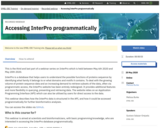
This is the third and last part of a webinar series on InterPro which is held between May 6th 2020 and May 20th 2020.
InterPro is a database that helps users to understand the possible functions of proteins sequence by identifying what family it belongs to or what domains and motifs it contains. To deal with the growing volume of protein sequence data and an increasing demand to retrieve subsets of the data, often via programmatic access, the InterPro website has been entirely redesigned. It provides additional features and more flexibility in querying, presenting and retrieving data. The website relies on an Application Programming Interface (API) which can also be utilised by users for direct access to the data.
This webinar describes how the InterPro data is structured in the API, and how it could be accessed programmatically for further bioinformatics analyses.
You can access the slides via GitHub.
Who is this course for?
This webinar is aimed at scientists and bioinformaticians, with basic programming knowledge, who are interested in accessing the InterPro database programmatically.
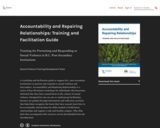
Training for Preventing and Responding to Sexual Violence in B.C. Post-Secondary Institutions
Short Description:
A workshop and facilitation guide to support B.C. post-secondary institutions to prevent and respond to sexual violence and misconduct. Accountability and Repairing Relationships is a series of four 90-minute workshops for individuals who have been informed that they have caused harm in the context of sexual violence. Designed for one-on-one or small group facilitation, learners are guided through information and reflection activities that help them recognize the harm they have caused, learn how to be accountable, and develop the skills needed to build better relationships and support a safe and healthy campus. (The slide deck that accompanies this resource can be downloaded from the Introduction).
Long Description:
A workshop and facilitation guide to support B.C. post-secondary institutions to prevent and respond to sexual violence and misconduct. Accountability and Repairing Relationships is a series of four 90-minute workshops for individuals who have been informed that they have caused harm in the context of sexual violence. Designed for one-on-one or small group facilitation, learners are guided through information and reflection activities that help them recognize the harm they have caused, learn how to be accountable, and develop the skills needed to build better relationships and support a safe and healthy campus. (The slide deck that accompanies this resource can be downloaded from the Introduction).
Word Count: 22412
ISBN: 978-1-77420-104-6
(Note: This resource's metadata has been created automatically by reformatting and/or combining the information that the author initially provided as part of a bulk import process.)

In this activity, students explore the effect of chemical erosion on statues and monuments. They use chalk to see what happens when limestone is placed in liquids with different pH values. They also learn several things that engineers are doing to reduce the effects of acid rain.
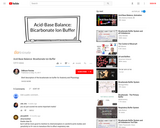
Short video on the bicarbonate ion buffer system for acid-base balance for anatomy and physiology.
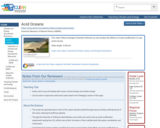
This video follows biologist Gretchen Hofmann as she studies the effects of ocean acidification on sea urchin larvae.
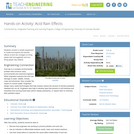
Students conduct a simple experiment to model and explore the harmful effects of acid rain (vinegar) on living (green leaf and eggshell) and non-living (paper clip) objects.
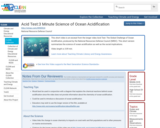
This short video is an excerpt from the longer video Acid Test: The Global Challenge of Ocean Acidification, produced by the National Resources Defense Council (NRDC). This short version summarizes the science of ocean acidification as well as the social implications.
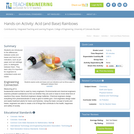
Students are introduced to the differences between acids and bases and how to use indicators, such as pH paper and red cabbage juice, to distinguish between them.

The most important property of carboxylic acids, an the one that is responsible for naming them such, is their acidity. An acid is any compound that donates a hydrogen ion (H+, also called a proton) to another compound, termed a base. Carboxylic acids to this much more readily than most other classes of organic compounds, so they are said to be stronger acids, even though they are much weaker than the most important mineral acids -- sulfuric acid (H2SO4), nitric acid (HNO3), and hydrochloric acid (HCl).
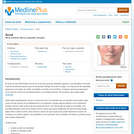
This patient education program explains acne including the causes and treatments. This resource is a MedlinePlus Interactive Health Tutorial from the National Library of Medicine, designed and developed by the Patient Education Institute.
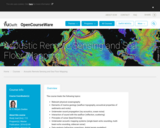
The course treats the following topics: - Relevant physical oceanography - Elements of marine geology (seafloor topography, acoustical properties of sediments and rocks) - Underwater sound propagation (ray acoustics, ocean noise) - Interaction of sound with the seafloor (reflection, scattering) - Principles of sonar (beamforming) - Underwater acoustic mapping systems (single beam echo sounding, multi-beam echo sounding, sidescan sonar) - Data analysis (refraction corrections, digital terrain modelling) - Applications (hydrographic survey planning and navigation, coastal engineering) - Current and future developments.

This course will begin with brief overview of what important current research topics are in oceanography (physical, geological, and biological) and how acoustics can be used as a tool to address them. Three typical examples are climate, bottom geology, and marine mammal behavior. Will then address the acoustic inverse problem, reviewing inverse methods (linear and nonlinear) and the combination of acoustical methods with other measurements as an integrated system. Last part of course will concentrate on specific case studies, taken from current research journals. This course is taught on campus at MIT and with simultaneous video at Woods Hole Oceanographic Institution.

The Acoustics of Speech and Hearing is an H-Level graduate course that reviews the physical processes involved in the production, propagation and reception of human speech. Particular attention is paid to how the acoustics and mechanics of the speech and auditory system define what sounds we are capable of producing and what sounds we can sense. Areas of discussion include:
the acoustic cues used in determining the direction of a sound source,
the acoustic and mechanical mechanisms involved in speech production and
the acoustic and mechanical mechanism used to transduce and analyze sounds in the ear.

How can you use the Engineering Design Process to access a geographically inaccessible location to deliver supplies?
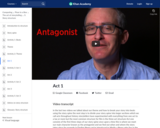
Introduction to Act 1.
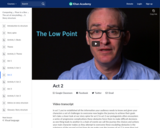
Overview of Act 2.
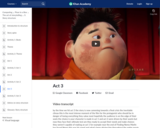
Introduction to Act 3.